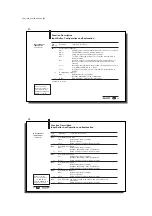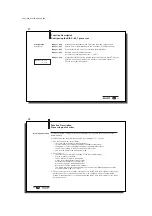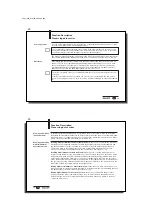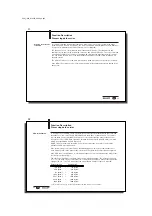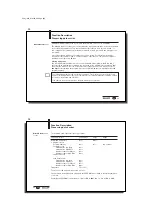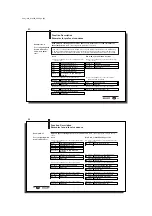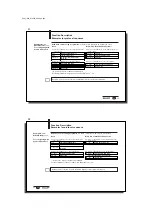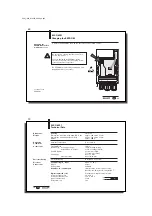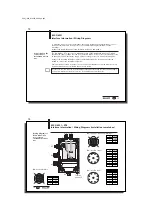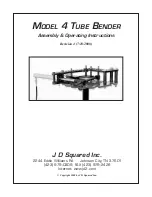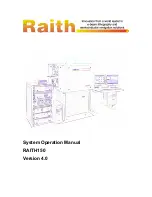
49
deutsch
49
E
Example No. 10
Mixed Data Access
(continued)
For configuring with
double bit header!
5.)
Process subaddresses of the output buffer:
6.)
Process subaddresses of the input buffer:
01
Hex
02
Hex
2nd number of
bytes
(Low Byte) 03
Hex
(High Byte) 00
Hex
03
Hex
3rd start address
(Low Byte) 38
Hex
04
Hex
(High Byte) 01
Hex
05
Hex
3rd number of
bytes
(Low Byte) 11
Hex
06
Hex
(High Byte) 00
Hex
00
Hex
/07
Hex
Invert TI-Bit
00
Hex
/07
Hex
Invert TO-Bit
7.)
Process subaddresses of the output buffer:
8.)
Process subaddresses of the input buffer:
01
Hex
/02
Hex
Terminator
FF
Hex
/FF
Hex
03
Hex
/04
Hex
(not used)
FF
Hex
/FF
Hex
05
Hex
/06
Hex
(not used)
FF
Hex
/FF
Hex
00
Hex
/07
Hex
Invert TI-Bit
00
Hex
/07
Hex
Invert TO-Bit
Fill all unused start addresses and number of bytes with FF
Hex
!
Continued on next .
Function Description
Examples for protocol sequence
C60_1-023_819395_0508_en.p65
50
50
E
00
Hex
/07
Hex
Reset AV-Bit
00
Hex
/07
Hex
Reset AA-Bit and AE-Bit
9.)
Process subaddresses of the output buffer:
10.)
Process subaddresses of the input buffer:
01
Hex
/02
Hex
(not used)
FF
Hex
/FF
Hex
03
Hex
/04
Hex
(not used)
FF
Hex
/FF
Hex
05
Hex
/06
Hex
(not used)
FF
Hex
/FF
Hex
00
Hex
/07
Hex
Invert TI-Bit
00
Hex
/07
Hex
Set AE-Bit
11.)
Process subaddresses of the output buffer:
12.)
Process subaddresses of the input buffer:
We recommend that you carefully document which parameters are used for start addresses and
number of bytes for writing/reading the desired data records.
The data are sequenced in the exact order specified in the program.
☞
Example No. 10
Mixed Data Access
(continued)
For configuring with
double bit header!
Function Description
Examples for protocol sequence


